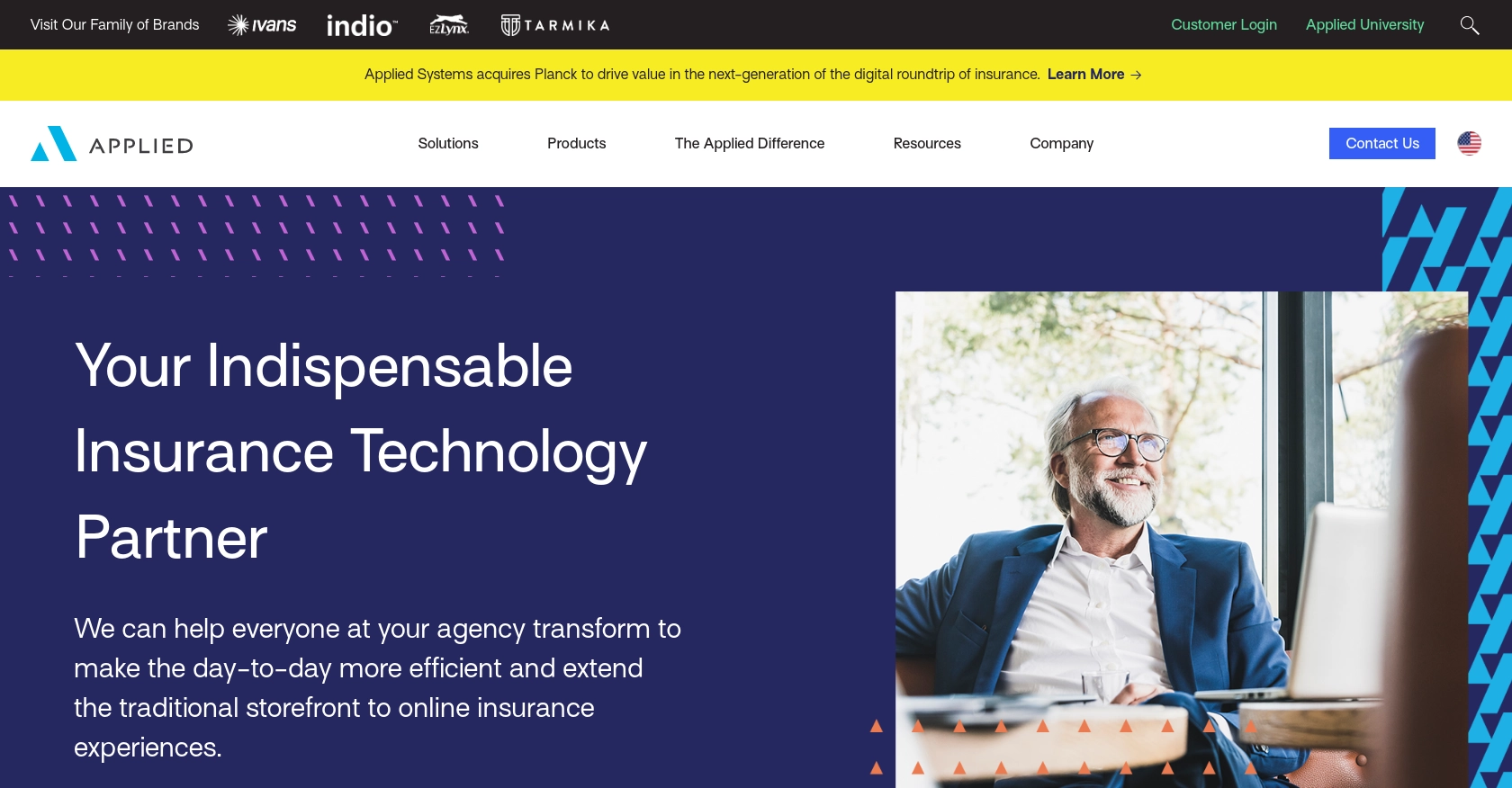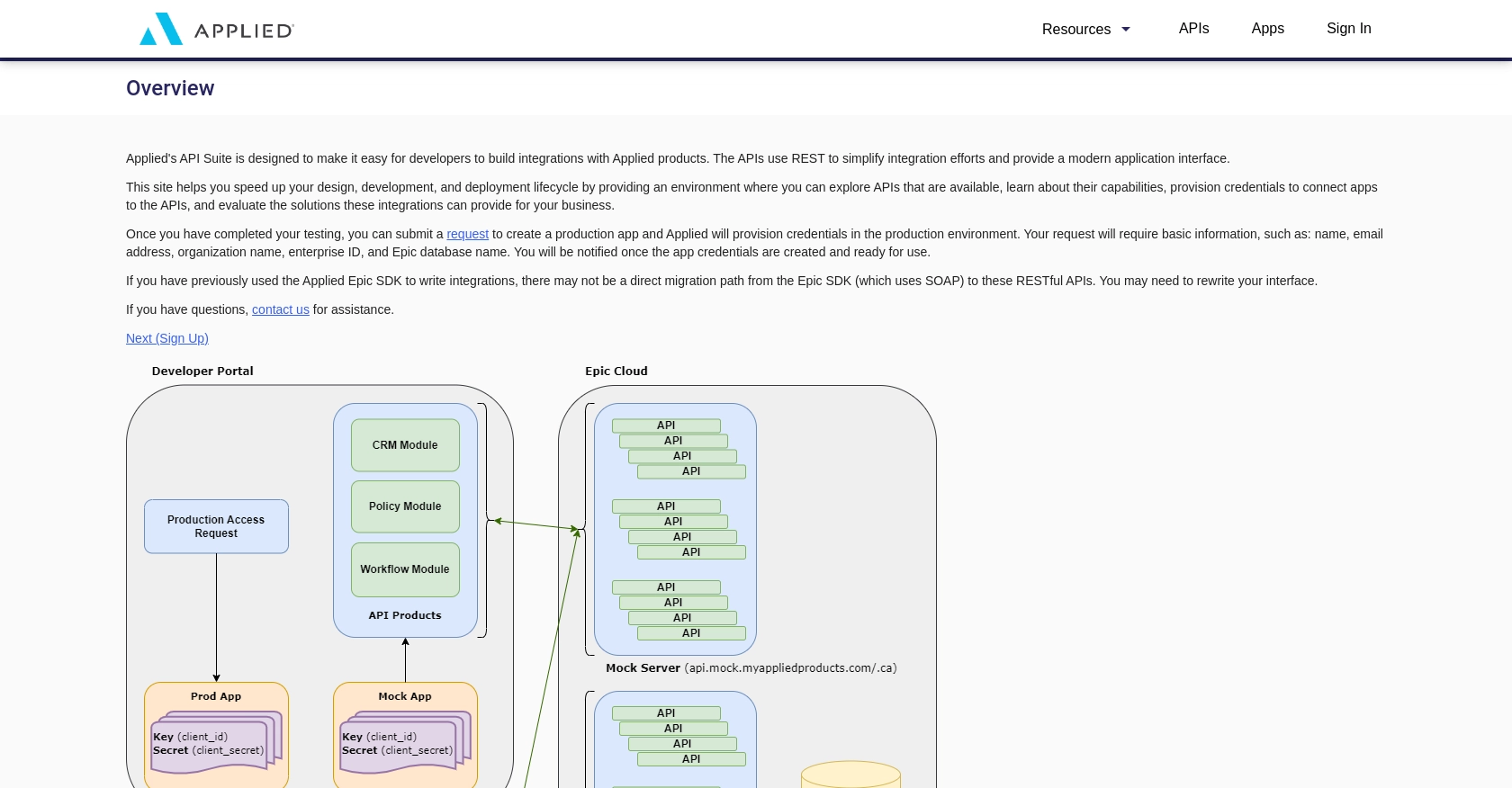Using the Applied Epic API to Get Clients (with Python examples)

Introduction to Applied Epic API
Applied Epic is a comprehensive insurance management platform that offers a unified solution for managing client relationships, policies, and claims. It is widely used by insurance agencies to streamline operations and enhance customer service through its robust suite of tools.
Integrating with the Applied Epic API allows developers to access and manage client data efficiently. For example, a developer might use the API to retrieve client information, enabling seamless integration with other systems for enhanced data analysis and reporting.
Setting Up Your Applied Epic Test/Sandbox Account
Before you can start interacting with the Applied Epic API, you need to set up a test or sandbox account. This environment allows you to safely experiment with API calls without affecting real client data. Follow these steps to get started:
Sign Up for an Applied Epic Developer Account
To access the Applied Epic API, you'll first need to sign up for a developer account. Visit the Applied Developer Portal and complete the registration process. This will grant you access to the necessary tools and resources for API integration.
Create a Sandbox Environment
Once your developer account is set up, you can create a sandbox environment. This is essential for testing API interactions without impacting live data. Follow these steps:
- Log in to your Applied Epic developer account.
- Navigate to the "Sandbox" section in the dashboard.
- Click on "Create New Sandbox" and fill in the required details.
- Once created, you'll receive sandbox credentials including a client ID and client secret.
Authenticate Using Custom Authentication
The Applied Epic API uses a custom authentication method. To authenticate your API requests, you'll need to generate an access token using your sandbox credentials. Here's how:
- Use your client ID and client secret to request an access token from the authentication endpoint.
- Store the access token securely, as it will be used to authorize your API calls.
For detailed instructions, refer to the Applied Epic API Documentation.
Generate API Keys
In addition to the access token, you may need API keys for specific operations. Follow these steps to generate them:
- Navigate to the "API Keys" section in your developer dashboard.
- Click on "Generate New Key" and specify the permissions required for your application.
- Copy and store the API key securely for future use.
With your sandbox environment and authentication set up, you're ready to start making API calls to the Applied Epic platform. In the next section, we'll explore how to retrieve client data using Python.

sbb-itb-96038d7
Making API Calls to Retrieve Clients Using Applied Epic API with Python
To interact with the Applied Epic API and retrieve client data, you need to make HTTP requests using Python. This section will guide you through the process, including setting up your Python environment, writing the code to make the API call, and handling the response.
Setting Up Your Python Environment for Applied Epic API Integration
Before you start coding, ensure you have Python installed on your machine. This tutorial uses Python 3.11.1. Additionally, you'll need the requests library to handle HTTP requests. Install it using the following command:
pip install requestsWriting Python Code to Call the Applied Epic API
Create a new Python file named get_clients.py and add the following code to retrieve clients from the Applied Epic API:
import requests
# Define the API endpoint and headers
endpoint = "https://api.myappliedproducts.com/crm/v1/clients"
headers = {
"Authorization": "Bearer Your_Access_Token",
"Content-Type": "application/json"
}
# Make a GET request to the API
response = requests.get(endpoint, headers=headers)
# Check if the request was successful
if response.status_code == 200:
# Parse the JSON data from the response
data = response.json()
# Loop through the clients and print their information
for client in data["_embedded"]["clients"]:
print(f"Client Name: {client['name']}, Email: {client['emailAddress']}")
else:
print(f"Failed to retrieve clients: {response.status_code} - {response.text}")
Replace Your_Access_Token with the access token you obtained during the authentication setup.
Understanding the API Response and Verifying Data
When you run the script, it sends a GET request to the Applied Epic API to retrieve client data. If successful, it prints the names and email addresses of the clients. You can verify the retrieved data by checking the sandbox environment in your Applied Epic account.
Handling Errors and Common Error Codes in Applied Epic API
It's crucial to handle potential errors when making API calls. The Applied Epic API may return various error codes, such as:
- 400 Bad Request: The request was invalid. Check the request parameters.
- 401 Unauthorized: Authentication failed. Verify your access token.
- 403 Forbidden: You do not have permission to access the resource.
Ensure your code checks the response status and handles errors appropriately to maintain robust integration.
Conclusion and Best Practices for Using the Applied Epic API
Integrating with the Applied Epic API provides a powerful way to manage client data efficiently within your insurance management systems. By following the steps outlined in this article, you can set up a robust integration that enhances your data handling capabilities.
Best Practices for Secure and Efficient Applied Epic API Integration
- Secure Storage of Credentials: Always store your access tokens and API keys securely. Consider using environment variables or secure vaults to prevent unauthorized access.
- Handle Rate Limiting: Be mindful of the API's rate limits to avoid throttling. Implement exponential backoff strategies to manage retries effectively.
- Data Transformation and Standardization: Ensure that the data retrieved from the API is transformed and standardized to fit your application's requirements. This will help maintain consistency across your systems.
Streamlining Integrations with Endgrate
While building integrations with APIs like Applied Epic can be rewarding, it can also be time-consuming and complex. Endgrate offers a solution by providing a unified API endpoint that connects to multiple platforms, including Applied Epic. This allows you to focus on your core product while outsourcing the integration complexities.
With Endgrate, you can build once for each use case and leverage an intuitive integration experience for your customers. Explore how Endgrate can simplify your integration needs by visiting Endgrate.
Read More
Ready to get started?
